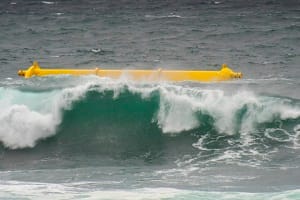Predicting wave heights doubles marine energy generation

 What if we could “tune” marine-energy devices so they could grab the maximum amount of power possible from each oncoming wave?
What if we could “tune” marine-energy devices so they could grab the maximum amount of power possible from each oncoming wave?
A new algorithm developed by researchers from the University of Exeter and Tel Aviv University could one day help us do just that.
When used with existing wave prediction technology, the algorithm enables wave-energy converters (WECs) to calculate the amount of force needed to maximize the energy generated by each individual wave. The result: wave-energy converters that are able to collect twice as much energy as before.
Wave-energy converters require some resistance to each wave to generate electricity. With zero resistance, the moving part of the device moves freely with each wave, generating no power. If the device has so much resistance that it’s rigid, it’s also incapable of producing electricity.
By running their algorithm five times a second, researchers were able to determine the ideal resistance for each oncoming wave. Furthermore, one second’s notice is all that’s needed to capture the greatest amount of energy.
“You would think that the longer the WEC knows the wave height in advance, the better, but in a surprising finding, it turns out that a one-second prediction horizon is enough,” said Tel Aviv researcher George Weiss, noting that a longer prediction time does not actually improve the energy harvest.




